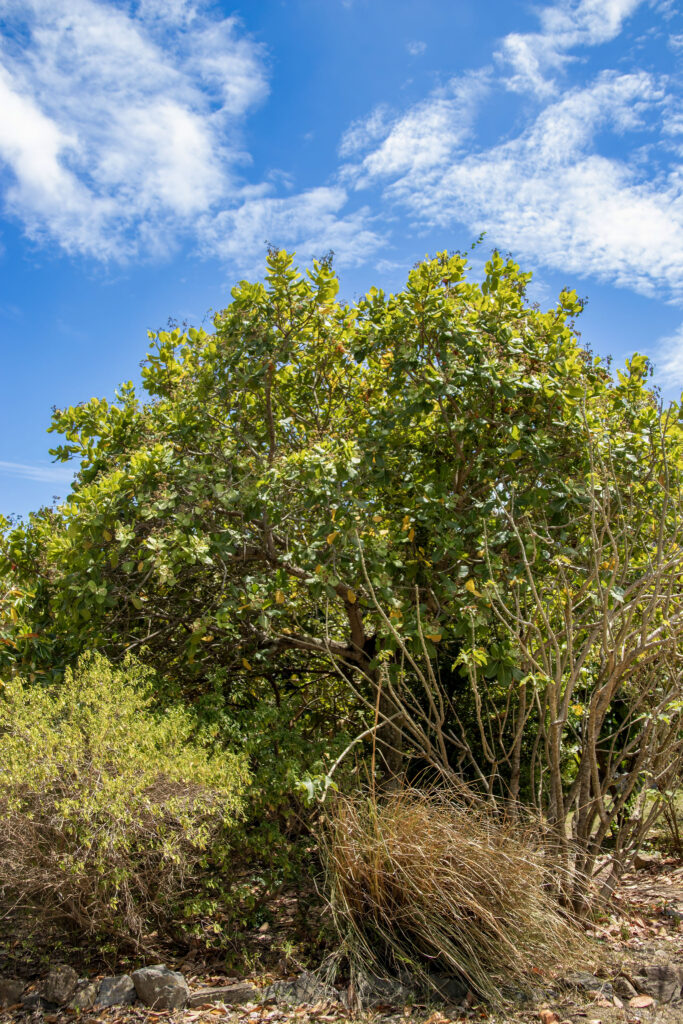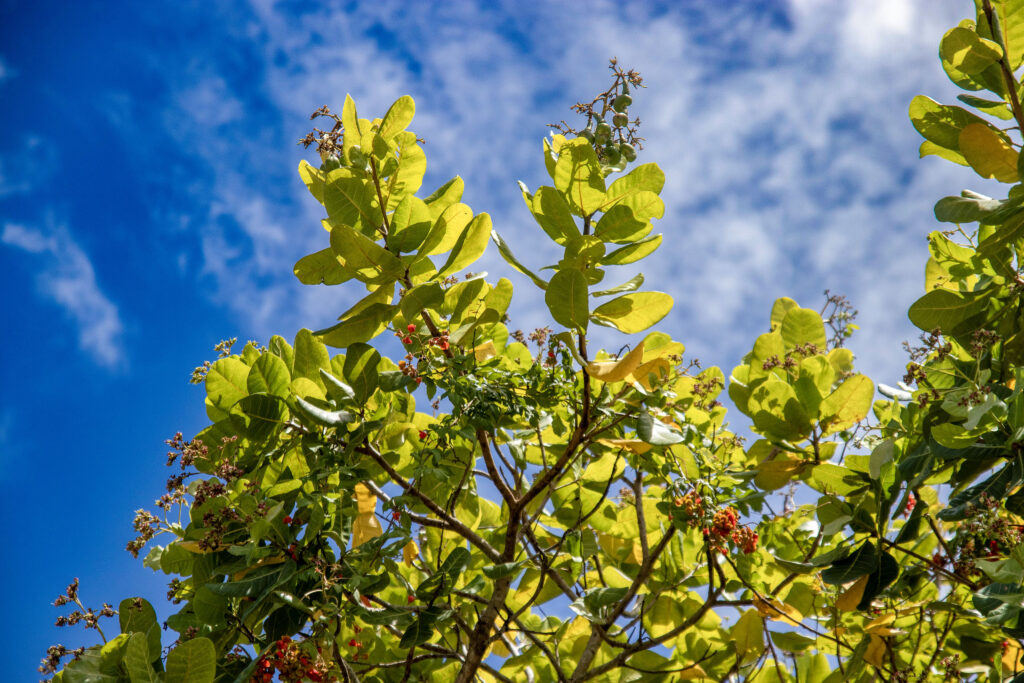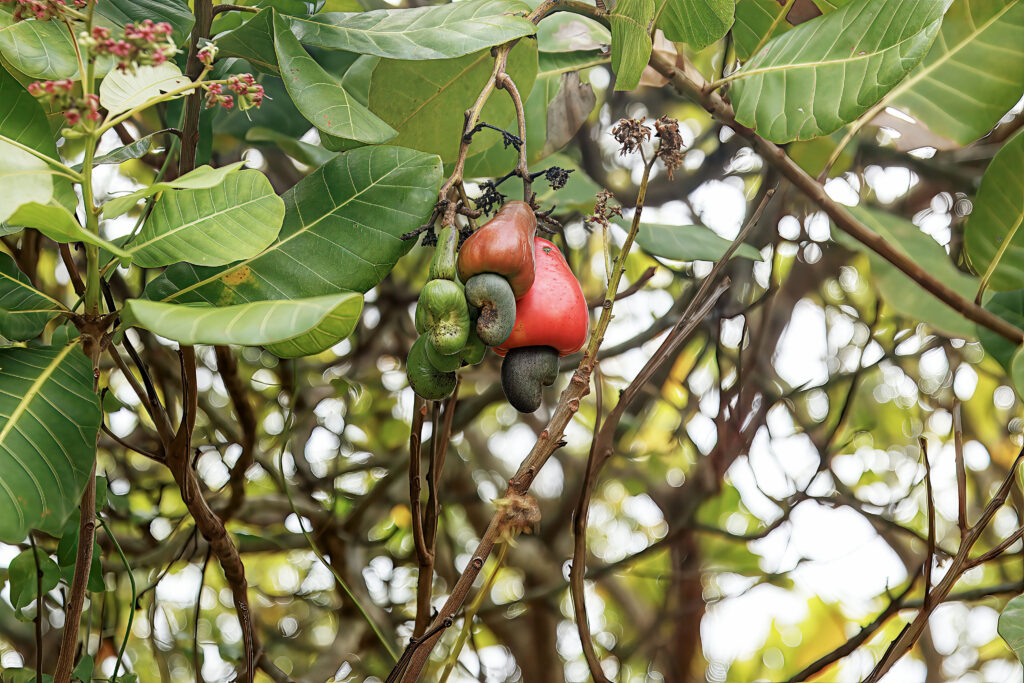Cashew tree
Scientific name: Anacardium occidentale
Common names: Cashew Tree, Cashew Nut Tree
The Cashew Tree, scientifically known as Anacardium occidentale, is a small tropical evergreen belonging to the Anacardiaceae family — the same plant family as mangoes, poison ivy, and sumac. Native to northeastern Brazil, the cashew has long since journeyed across the world and found a place in Caribbean gardens and farms, including right here on St. Croix.
History on St. Croix
The exact date of introduction is unclear, but cashew trees likely arrived in the Virgin Islands during the colonial era, brought by Portuguese explorers or Danish planters trading through Brazil and West Africa. Valued for their drought tolerance, edible fruit, and economic potential, cashews became a practical addition to island landscapes.
Today, cashew trees can occasionally be found in home gardens, around older estates, or growing wild along dry roadsides, particularly in the island’s drier regions.
Botanical Description
- Height: 10–40 feet (3–12 meters)
- Leaves: Broad, leathery, oval-shaped leaves with a smooth texture
- Flowers: Small, pale green or pinkish, and lightly fragrant
- Fruit: A brightly colored “cashew apple” (yellow, red, or orange), with the kidney-shaped true fruit — the cashew nut — attached to the end
Unique Features
- The cashew apple is juicy with a sweet-tart flavor. In other countries, it’s eaten fresh, juiced, or fermented into liqueur.
- The cashew nut is encased in a hard shell containing a caustic oil (similar to urushiol, the irritant found in poison ivy).
- Processing cashews safely requires careful roasting or oil removal — meaning that “raw” cashews sold commercially are always heat-treated.
Ecological Notes
- Cashew trees thrive in sandy, well-drained soils and exhibit excellent drought resistance.
- They provide valuable shade, food, and occasional nesting sites for birds and insects.
- Fallen fruits and leaves help return organic matter to the soil, enriching dry and often nutrient-poor areas.
Cultural and Culinary Use
While cashew nut production isn’t commercially pursued on St. Croix, locals with access to trees sometimes experiment with the cashew apple — making jam, fresh juice, or even a type of local wine.
The nuts themselves are rarely processed due to the hazards involved, but small-scale roasting occasionally takes place in home settings.
Did You Know?
- The colorful cashew apple isn’t a true fruit! Botanically speaking, the cashew nut is the true fruit, while the apple is a swollen stem (called a pedicel).
- In countries like India and Brazil, the cashew apple is highly prized — often enjoyed fresh, candied, or turned into refreshing beverages.


